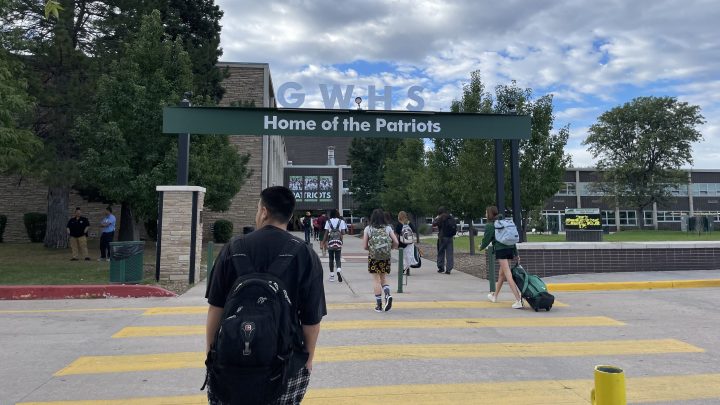
Some districts that stopped using school resource officers in recent years are now reversing course
Some districts that stopped using school resource officers in recent years are now reversing course

More than half of all public schools in the U.S. have law enforcement present on campus. Often, that’s in the form of a school resource officer, or SRO — a police officer, usually one who’s specially trained and armed who’s stationed at the school. Following the murder of George Floyd in 2020, more than 50 districts ended or cut back their use of school resource officers.
But since then, school shootings have continued — including the one last year in Uvalde, Texas — and some of those districts are reversing course.
That includes Denver Public Schools, where the school board voted to reinstate SROs in June, a few months after a student shot and injured two administrators at a school this spring.
The school resource officers are now at 13 high schools in Denver, including George Washington High School. That means when students enter, they pass a police car parked close to the entrance that belongs to the school resource officer. He wasn’t free for an interview, but Principal Dackri Davis pointed out that he knows the territory.
“Our resource officer is the same individual that was here a few years ago before they were taken out of the building,” said Davis.
SROs are meant to be role models who mentor students, but Davis said that the school especially relies on them in any kind of crisis.
“If we are fearful there’s a weapon on campus, we can call the SRO in to help with that,” she said. “That response time is way different than if you had to call 911 and get someone here.”
Schools with an officer present report about 30% fewer violent offenses than those that don’t, according to a study published earlier this year. It also found schools with SROs reported an increase in the number of guns on campus.
“Which is probably evidence that they’re catching things that weren’t caught before,” said Shawn D. Bushway, an economist at think tank RAND, a professor at the University of Albany and one of the authors of the study. “But it’s not for free.”
There’s the financial cost of school resource officers. The country spends more than $2 billion on them annually, through a mix of federal, state and local funds. (In Denver, the SROs are employees of the police department, which said it hadn’t yet calculated the full price tag.)
There are also disciplinary costs. Bushway found that schools that introduced an SRO saw an increase in student suspensions, expulsions and arrests. That effect was larger among Black students and those with disabilities.
“You can link things like suspensions to other outcomes, like not graduating,” said Bushway. “These things have big impacts on people’s lives.”
Then, there’s the cost of how having police present at school makes students feel.
“I remember I walked in, and I saw two people with guns,” said 17-year-old Emerson Kerver, a senior at George Washington in Denver. “I remember being incredibly uncomfortable and getting away from that room as quickly as I could.”
That room at George Washington High School is just 15 miles away from Columbine High School, where 15 people died in a mass shooting nearly a quarter of a century ago.
That’s way before 14-year-old George Washington freshman Kailey Trotter was born. But she still thinks about it and said she wouldn’t mind having more school resource officers around.
“Because you never know what could happen,” said Trotter. “I feel it’ll just help keep control.”
As school resource officers come back, Denver is monitoring ticketing and arrests. Data from the first two months show that neither have increased.
There’s a lot happening in the world. Through it all, Marketplace is here for you.
You rely on Marketplace to break down the world’s events and tell you how it affects you in a fact-based, approachable way. We rely on your financial support to keep making that possible.
Your donation today powers the independent journalism that you rely on. For just $5/month, you can help sustain Marketplace so we can keep reporting on the things that matter to you.











